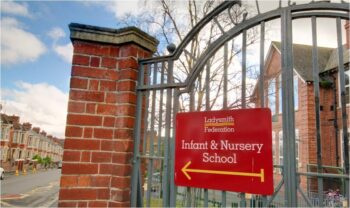HEAVITREE PROPERTY PRICES – ARE GOOD SCHOOLS PUSHING UP OUR HOUSE PRICES?

Jonathan Newall has been Managing Director of Southgate Estates since it opened over ten years ago as SaleBoards and has been consistently involved in the Heavitree property market. Having three children and being married to a former primary school teacher, he is more than aware of the importance of good schooling.
When young families walk into our office looking for their first house in Exeter, the most important factor on their agenda is likely to be schooling.
Blessed with three great primary schools (St Michael’s, Ladysmith and St Nicholas) which are rated either Outstanding or Good by Ofsted, Heavitree is within reach of St Peter’s secondary school and is within easy walking distance of several private sector schools.
In terms of the availability of good schools, Heavitree is ahead of most areas of Exeter and this is perhaps the biggest influence on recent house price hikes in the area.
When choosing where to live in relation to schools, it is important to consider two aspects. Firstly, the physical journey to and from school and secondly, and perhaps more important, the issue of obtaining a place there. Given that each of these primary schools has a great reputation, all are likely to be over-subscribed and it is not unheard of for people living next to a school to be turned down.
Heavitree is somewhat unusual in that two of the three primary schools I have mentioned do not use either ‘catchment area’ or ‘distance from school’ as their main admission criteria. Both St Michael’s and St Nicholas are church schools, and regular church attendance is likely to be the key to getting a place. Only when those who satisfy the church attendance criteria have been given places are the remaining places offered to those living nearby. As the non-faith places at such schools are often issued to those living closest, competition for houses close to good schools can be fierce.
However, it is not all bad news. Ladysmith Infant School still works on a catchment area criteria and is rated Outstanding by Ofsted. If moving to the area with school places in mind, it is seriously worth checking the catchment area boundaries before deciding where to live. Being just a few meters outside the catchment area can make all the difference….
When it comes to secondary education, St Peter’s is the obvious school of choice for those living in Heavitree. However, it has gained a reputation for being one of the most over-subscribed schools in Devon and it, too, is a church school with priority given to regular worshippers. Whilst it is not uncommon for families to attend church for two years before applying to the school, there are also 65 places each year which are issued to those living nearby. This serves to put a premium on houses in the Broadfields area, but even living here may not guarantee a place.
If your child is lucky (and bright) enough to get a place at Colyton Grammar or Torquay Boys or Girls Grammar Schools, then access to the school bus is an important factor. Again, parts of Heavitree are well placed for both, with the Torquay bus leaving from County Hall, and the Colyton bus picking up in Heavitree and on Honiton Road.
As well as having great access to state schools, there are a number of excellent fee-paying schools – including Exeter School, The Maynard and Bramdean – within easy walking distance.
At Southgate Estates, we are sometimes surprised at just how popular some houses in certain locations of Heavitree have become with buyers. We often see prices go above the asking price and the demographic of these buyers tends to include young families. Apart from being a great place to live, with plenty of good family housing, great facilities and good transport links, it is ultimately the access to good schools that is likely to be driving Heavitree property prices northwards.
http://www.ladysmithfederation.net/web
http://www.stmichaelsacademyexeter.org/
March 2017